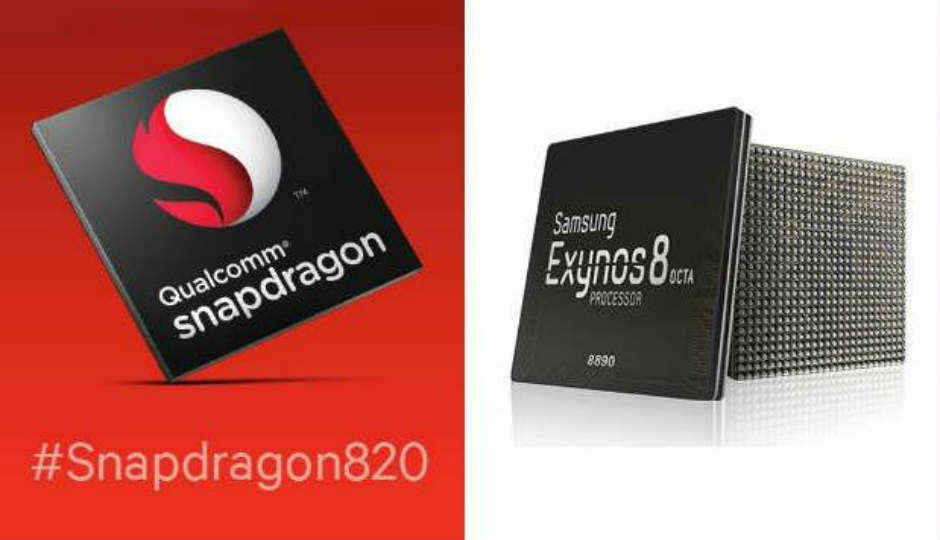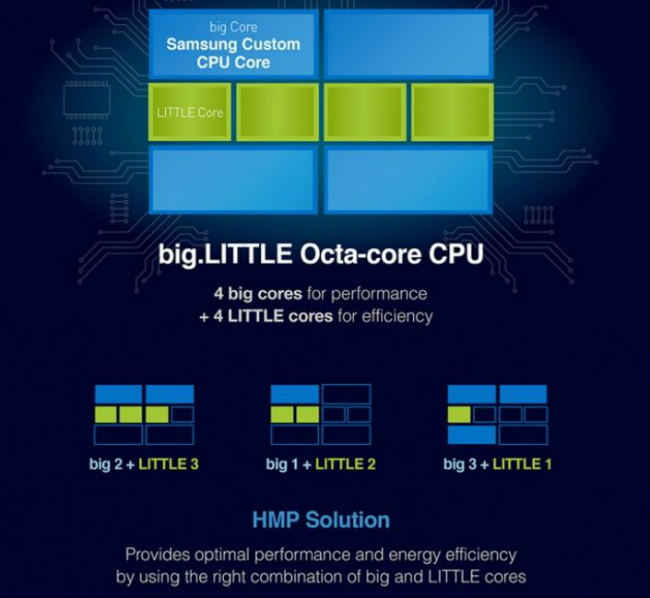Architecture and working of Snapdragon 820 and Exynos 8890 explained

The latest chipsets powering the latest flagship smartphones are here, and we'll soon get our hands on the best of the smartphones for 2016. Here's taking a look at the two chipsets that are likely to power these devices, in detail.
Qualcomm unveiled the Snapdragon 820 chipset back in September 2015, elaborating on its architecture, performance and all other improvements that Qualcomm incorporated in it. Of all the devices that we have seen at Mobile World Congress (MWC) 2016, three of the four notable flagship devices are powered by this processor. Samsung, in November 2015, came up with the Exynos 8890, which powers the Samsung Galaxy S7 and S7 Edge, and may power a number of other devices across the year.
To begin with, the two new chipsets are very different from each other in terms of architecture. The Snapdragon 820 is a quad-core processor, and Qualcomm uses its custom Kryo cores arranged in two dual-core clusters clocked at 2.2GHz and 1.6GHz respectively. In comparison, Samsung’s Exynos 8890 is an octa-core processor, with two quad-core clusters. While the custom Mongoose M1 quad-core cluster is clocked at 2.6GHz on 2-core load and 2.3GHz on 4-core load, the other cluster has four Cortex-A53 cores clocked at 1.6GHz. Both the Snapdragon 820 and the Exynos 8890 have two 32-bit LPDDR4 memory controllers, with the Snapdragon 820 having slightly higher transfer speed of 1803MHz against the Exynos 8890’s 1794MHz, leading to slightly higher bandwidth of 28.8GB/s on the Snapdragon 820, against 28.7GB/s on the Exynos 8890. Both the processors are manufactured using Samsung 14nm FinFET LPP (Low Power Plus) fabrication process.
On brass terms, an octa-core processor has generally been thought to be more powerful than quad-core competitors. However, the important differentiating factor to be considered here is the difference in the cores used. Qualcomm has claimed that the Snapdragon 820 presents 100% higher performance in 50% power consumption, as compared to the Snapdragon 810. The Snapdragon 820 also combines the Hexagon 680 DSP to offload background and light load applications off the processor’s cores, thereby freeing up processing resource and allowing the Kryo cores to function at their fullest potential. Imaging tasks are taken care of by the Spectra ISP, while the addition of the Zeroth engine and the Symphony system manager does two very crucial things — while the Zeroth engine lends machine learning capabilities to the processor so as to detect your network and application usage pattern, and prepare the network receptor and the processor to predict when you switch from WiFi to cellular network, or such similar actions. It might seem like a minor improvisation, but Qualcomm claims that it will do you and your smartphone a whole world of good. The Symphony system manager, on the other hand, collates all the aspects of the Snapdragon 820, and monitors which aspect needs to be used for what purpose. The system manager is responsible for allocating tasks across the cores, DSP and ISP, which Qualcomm states will make processor utilisation better and more efficient.
Meanwhile, the Exynos 8890 is an octa-core processor arranged in big.LITTLE architecture between the Mongoose M1 cores and Cortex-A53 cores. The architecture of the Mongoose cores remain similar to ARM’s big core architecture, and with only two cores loaded, the clock speed can shoot up to 2.6GHz. However, with the details we have at our disposal right now, the Exynos 8890 does not use the elaborate resource distribution mechanism like the Snapdragon 820, and relies on the lower-clocked core cluster to manage the lighter applications. What Samsung has done with the Exynos to increase performance efficiency is to introduce Heterogenous Multi-Processing, which uses multiple combinations of the big and little cores to optimise performance. This may prove particularly beneficial while gaming and using communication tools, on the resources front.
In terms of graphics, the Qualcomm Snapdragon 820 uses the Adreno 530 GPU, which Qualcomm has claimed to be 40% faster than the older generation Adreno 430 GPU, while using 40% lesser power than the older GPU. The Adreno 530 integrates OpenCL 2.0 framework along with OpenGL ES 3.1, Renderscript and Vulkan APIs, and uses improved fine grain power management, rendering, compositing and compression techniques. In the meantime, the Exynos 8890 uses the Mali-T880MP12, increasing the number of cores by four as against the Exynos 7420’s MP8 GPU. While the overall performance increase can go as much as up to 2x that of the previous generation flagship, the GPU may have the ability to decrease the frequency of the cores, thereby optimising the power consumption as per usage.
We are yet to test out the two processors for ourselves. On paper, both the processors seem formidable, and use their own set of customisations to optimise for better performance and lesser power consumption. As of now, the year 2016 seems set for a good run on the best of Qualcomm and Samsung so far.






